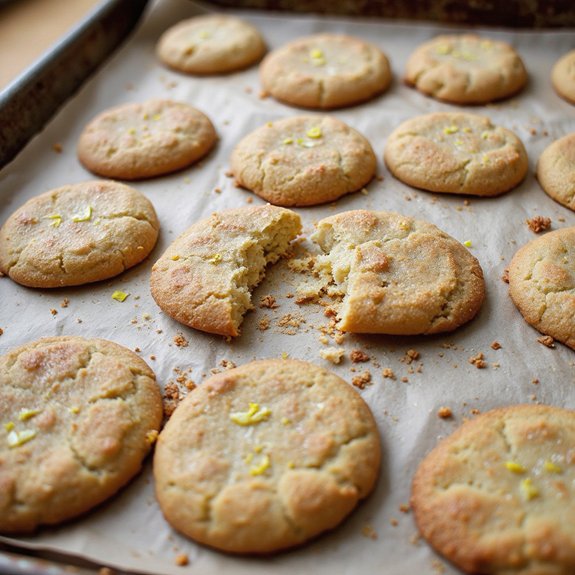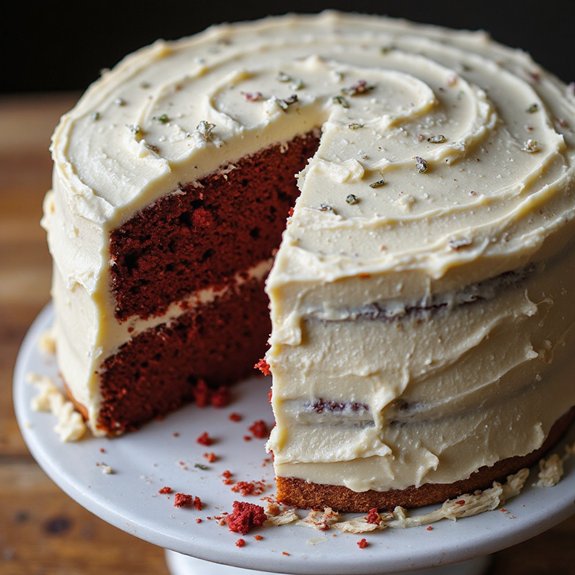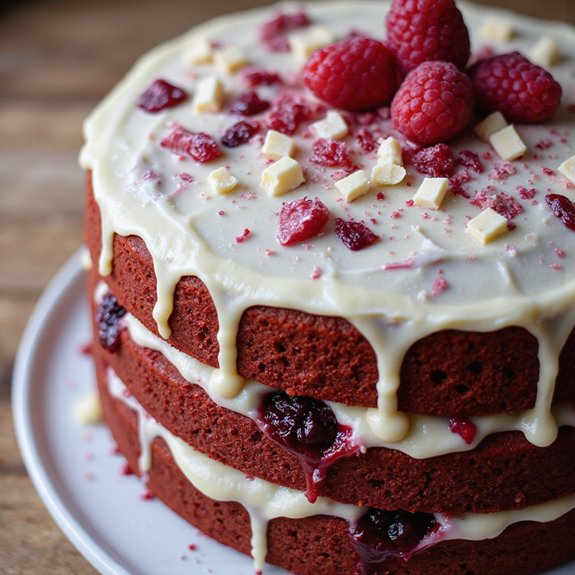Picture a plate of sun-kissed cookies, their crackly cinnamon coats dusted like warm sand, releasing a citrusy perfume the moment they hit the table.
Imagine biting into tender centers—buttery and soft—brightened with fresh lemon zest that lifts the cozy cinnamon into something breezy and joyful.
That balance is why these Lemon Snickerdoodles matter to me: they taste like comfort with a twist, the kind of bake that turns an ordinary afternoon into a small celebration.
When my son’s study group arrived early and I’d nothing special ready, this dough chilled while we tidied, baked in quick batches, and filled the house with a welcoming aroma that made everyone exhale.
They’re perfect for busy weeknights, Sunday suppers, potlucks, or a lunchbox pick-me-up—simple to mix, quick to bake, and crowd-pleasing every time.
If you love classic snickerdoodles but crave brighter flavor, this is your cookie.
Ready? Let’s cook!
Why You’ll Love It
- Delivers bright, zesty lemon flavor with classic cinnamon-sugar warmth
- Bakes into soft, chewy centers with lightly crisp, crackly edges
- Comes together quickly; simple chill for perfect texture
- Uses pantry staples plus fresh lemon for freshness
- Freezes beautifully for make-ahead treats anytime
Ingredients
- 2 3/4 cups all-purpose flour — spoon and level for accuracy (unbleached if possible)
- 1 1/2 teaspoons cream of tartar — classic tang and chew
- 1/2 teaspoon baking soda — fresh, not expired
- 1/2 teaspoon fine sea salt — evenly seasons dough
- 1 cup granulated sugar — helps crisp edges
- 1/2 cup light brown sugar, packed — adds moisture and depth
- 1 cup unsalted butter, softened — room-temp for proper creaming
- 1 large egg, room temperature — binds and lifts
- 1 large egg yolk, room temperature — extra richness and chew
- 2 teaspoons pure vanilla extract — real vanilla, not imitation
- 2 tablespoons fresh lemon zest, finely grated — microplane for max oils
- 2 tablespoons fresh lemon juice — bright citrus tang
- 1/2 cup granulated sugar, for coating — even, light layer
- 2 teaspoons ground cinnamon, for coating — fresh and fragrant
- 1 teaspoon lemon zest, for coating — rub into sugar to release oils
Step-by-Step Method
Cream the Sugars and Butter
Beat softened butter with granulated and brown sugars until light and fluffy, 2 to 3 minutes. Use an electric mixer on medium speed. Scrape the bowl to make certain even mixing.
Proper creaming traps air, giving cookies lift and tenderness. For extra lemon aroma, rub zest into the sugars before adding butter to release essential oils.
Combine Dry Ingredients
Whisk flour, cream of tartar, baking soda, and fine sea salt in a separate bowl. Break up any lumps for even distribution. Keep the mixture airy by whisking rather than stirring.
This guarantees consistent rise and prevents dense spots. Set aside within arm’s reach to streamline adding it to the wet ingredients in stages.
Blend in Eggs, Vanilla, and Lemon
Add egg, egg yolk, vanilla, lemon zest, and lemon juice to the creamed mixture. Beat until smooth and fully combined. Scrape down the bowl once to incorporate any unmixed bits.
The yolk adds richness and chew. Lemon elements brighten flavor and balance sweetness. Avoid overbeating to keep the dough tender.
Incorporate Dry into Wet
Add the dry ingredients in two additions. Mix on low speed just until a soft dough forms. Stop when no dry streaks remain to prevent toughness.
Use a rubber spatula to fold in the last bits gently. The dough should be soft but not sticky. Overmixing can lead to flatter, tougher cookies.
Chill the Dough Briefly
Cover the bowl and refrigerate for 30 minutes. Chilling firms the dough, making it easier to portion and roll.
It also helps control spread for thicker cookies. If you prefer even thicker cookies, chill portioned dough balls an additional 30 minutes before baking. Don’t skip this step for best texture.
Preheat and Prep Pans
Preheat the oven to 350°F (175°C). Line two baking sheets with parchment paper to prevent sticking and promote even browning. Arrange your cooling rack nearby.
Prepare your cookie scoop for consistent portion sizes. Bake one sheet at a time in the center of the oven for the most even heat.
Mix the Coating
Stir together coating sugar, ground cinnamon, and a little fresh lemon zest in a small bowl. Break up any zest clumps with your fingers.
The cinnamon adds warmth, while zest brightens the finish. Mix thoroughly so every cookie gets a consistent, fragrant coating that caramelizes slightly in the oven.
Portion and Roll in Sugar
Scoop 1 1/2-tablespoon portions of dough. Roll each into a smooth ball between your palms. Toss each ball generously in the cinnamon-lemon sugar until fully covered.
A thick, even coat yields classic crackly tops. Re-roll in the mixture if patches look bare. Work quickly to keep dough cool.
Arrange and Bake
Place coated dough balls on lined sheets, spaced about 2 inches apart. Bake one sheet at a time for 9 to 11 minutes. Look for set edges, puffed centers, and crackly tops.
Avoid overbaking to keep centers soft. If your oven runs hot, start checking at 8 minutes. Rotate the pan once if needed.
Cool and Repeat
Let cookies cool on the baking sheet for 5 minutes to set. Transfer gently to a cooling rack to cool completely.
Repeat with remaining dough, re-coating balls in sugar as needed. Store cooled cookies airtight at room temperature up to 4 days, or freeze baked cookies up to 2 months for later.
Ingredient Swaps
- No cream of tartar? Use 2 tsp baking powder total (and omit the baking soda) for a similar tang and lift.
- Dairy-free: swap butter with equal amount plant butter (stick style); egg-free: use 1 flax egg (1 tbsp ground flax + 3 tbsp water) plus 1 tbsp plant milk for the yolk.
- Citrus swaps: sub lemon zest/juice with equal lime, orange, or grapefruit; if no fresh citrus, use 1 tsp lemon extract in dough and skip juice.
- Gluten-free: replace flour with a 1:1 gluten-free baking blend containing xanthan gum.
- Budget/availability: light brown sugar can be replaced with white sugar + 1 tsp molasses; fine sea salt can be table salt (use a pinch less).
You Must Know
- Doneness • If edges look pale and centers feel soft but tops are crackly, pull them at 9–10 minutes; they’ll finish setting on the sheet in 5 minutes. Why: carryover heat firms the centers without drying them.
- Troubleshoot • If cookies spread too thin into crispy puddles, chill portioned dough balls 30–60 minutes and assure butter is truly softened (about 65–67°F) not melty. Why: colder fat slows spread and preserves lift.
- Flavor Boost • To intensify lemon, rub the 2 tbsp zest into the 1½ cups sugars for 30–60 seconds until fragrant, and add 1/2 tsp lemon extract. Why: oil release + extract amplifies citrus without adding extra liquid.
- Scale • For 12 cookies, halve every ingredient precisely; use a 1½-tbsp scoop still, just yield ~12. For minis, use a 2-teaspoon scoop and check doneness at 7–8 minutes. Why: smaller mass finishes faster; same spacing rule (~2 inches).
- Make-Ahead • For dough holding beyond the day, portion, sugar-coat, freeze on a tray, then bag up to 2 months; bake from frozen at 350°F adding 1–2 minutes. Why: coating sticks better pre-freeze and frozen dough bakes evenly.
Serving Tips
- Serve warm with vanilla ice cream and a drizzle of lemon curd.
- Pair with hot tea: Earl Grey, chamomile, or a light green tea.
- Create a cookie sandwich using lemon cream cheese frosting.
- Plate with fresh berries and a dusting of powdered sugar.
Storage & Make-Ahead
Store cookies airtight at room temperature up to 4 days.
In the fridge, they keep 1 week but may firm up—refresh briefly in the microwave.
Make ahead: chill dough tightly covered up to 48 hours.
Portion and freeze dough balls up to 2 months; bake from frozen, adding 1–2 minutes.
Reheating
Revive cookies gently.
Microwave 8–12 seconds wrapped in a slightly damp paper towel.
Warm in a 300°F oven 3–5 minutes.
Briefly steam on stovetop in a covered pan off heat.
County-Fair Bake-Sale Favorite
Sometimes the simplest treats steal the show, and these lemon snickerdoodles are the ones I’d pile into gingham-lined baskets for a county-fair bake sale.
I can see them now: sugar-dusted rounds with crackly tops, lemon zest glinting like confetti, drawing folks in with a bright, buttery aroma.
I keep them classic but crowd-pleasing—soft middles, crisp edges, a cinnamon sparkle that warms the citrus. I rub zest into sugar so the oils bloom, then roll each scoop generously in lemon-cinnamon coating.
On the table, I stack them high, tuck a handwritten sign beside them, and watch them disappear. One bite lands you in summer: sunlight on the tongue, a little spice, a lot of comfort.
Final Thoughts
Ready to bake a batch? Give these zesty, cinnamon-kissed snickerdoodles a try, and feel free to tweak the lemon to your taste—add a splash of lemon extract or extra zest for an even brighter bite!
Frequently Asked Questions
How Can I Make These Cookies Gluten-Free Without Grainy Texture?
Use a 1:1 cup-for-cup gluten-free blend with xanthan gum, plus 2 tablespoons fine almond flour. Let the dough rest 30 minutes, then bake slightly under. You’ll get buttery edges, tender centers, no sandy crumble.
Can I Prepare the Dough Using a Food Processor Instead?
Yes, I can. I pulse dry ingredients, then butter and sugars until sandy, add eggs, vanilla, and citrus, and finish just combined. I scrape often, chill the dough, and enjoy the whisper-light, tender crumb.
What’s the Best Way to Ship These Cookies Safely?
I double-wrap pairs back-to-back, nestle them in a snug tin with parchment, cushion gaps with crumpled paper, then box-within-a-box. I ship fast, avoid heat, and label “fragile.” You’ll open it to intact, buttery halos.
How Do High-Altitude Adjustments Change Bake Time and Leavening?
At high altitude, I bake shorter and hotter, reduce leaveners slightly, and add a touch more flour and liquid. You’ll see dough spread less, tops crack delicately, and aromas bloom faster—watch edges set, not color.
Are There Dairy-Free Substitutes That Keep the Same Texture?
Yes—I swap plant butter sticks for butter and use 2 tablespoons neutral oil to mimic richness. I keep the egg, or use aquafaba for lift. The dough chills longer; the cookies still crackle, tender and fragrant.

Lemon Snickerdoodle Cookies
Equipment
- 2 Mixing bowl
- 1 Electric mixer
- 1 Whisk
- 1 Rubber spatula
- 1 microplane zester
- 1 Measuring cups set
- 1 Measuring spoons set
- 2 Baking sheet
- 2 Parchment paper
- 1 Small bowl
- 1 Cooling rack
- 1 Cookie scoop
Ingredients
- 2 3/4 cup all-purpose flour
- 1 1/2 teaspoon cream of tartar
- 1/2 teaspoon baking soda
- 1/2 teaspoon fine sea salt
- 1 cup granulated sugar
- 1/2 cup light brown sugar packed
- 1 cup unsalted butter softened
- 1 large egg room temperature
- 1 large egg yolk room temperature
- 2 teaspoon pure vanilla extract
- 2 tablespoon fresh lemon zest finely grated
- 2 tablespoon fresh lemon juice
- 1/2 cup granulated sugar for coating
- 2 teaspoon ground cinnamon for coating
- 1 teaspoon lemon zest for coating
Instructions
- Whisk together the flour, cream of tartar, baking soda, and salt in a medium bowl and set aside.
- Beat the butter, granulated sugar, and brown sugar with an electric mixer on medium speed until light and fluffy, about 2 to 3 minutes.
- Add the egg, egg yolk, vanilla, lemon zest, and lemon juice to the butter mixture and beat until smooth and combined.
- Add the dry ingredients to the wet ingredients in two additions and mix on low just until a soft dough forms.
- Cover the bowl and chill the dough in the refrigerator for 30 minutes to firm slightly.
- Preheat the oven to 350°F (175°C) and line baking sheets with parchment paper.
- Stir together the coating sugar, cinnamon, and lemon zest in a small bowl until evenly combined.
- Scoop the dough into 1 1/2-tablespoon portions, roll each into a ball, and coat thoroughly in the cinnamon-lemon sugar.
- Arrange the coated dough balls on prepared baking sheets spaced about 2 inches apart.
- Bake one sheet at a time for 9 to 11 minutes until the cookies are set around the edges and slightly puffed with crackly tops.
- Let the cookies cool on the baking sheet for 5 minutes, then transfer to a cooling rack to cool completely.
- Repeat with remaining dough, re-rolling in coating as needed.





